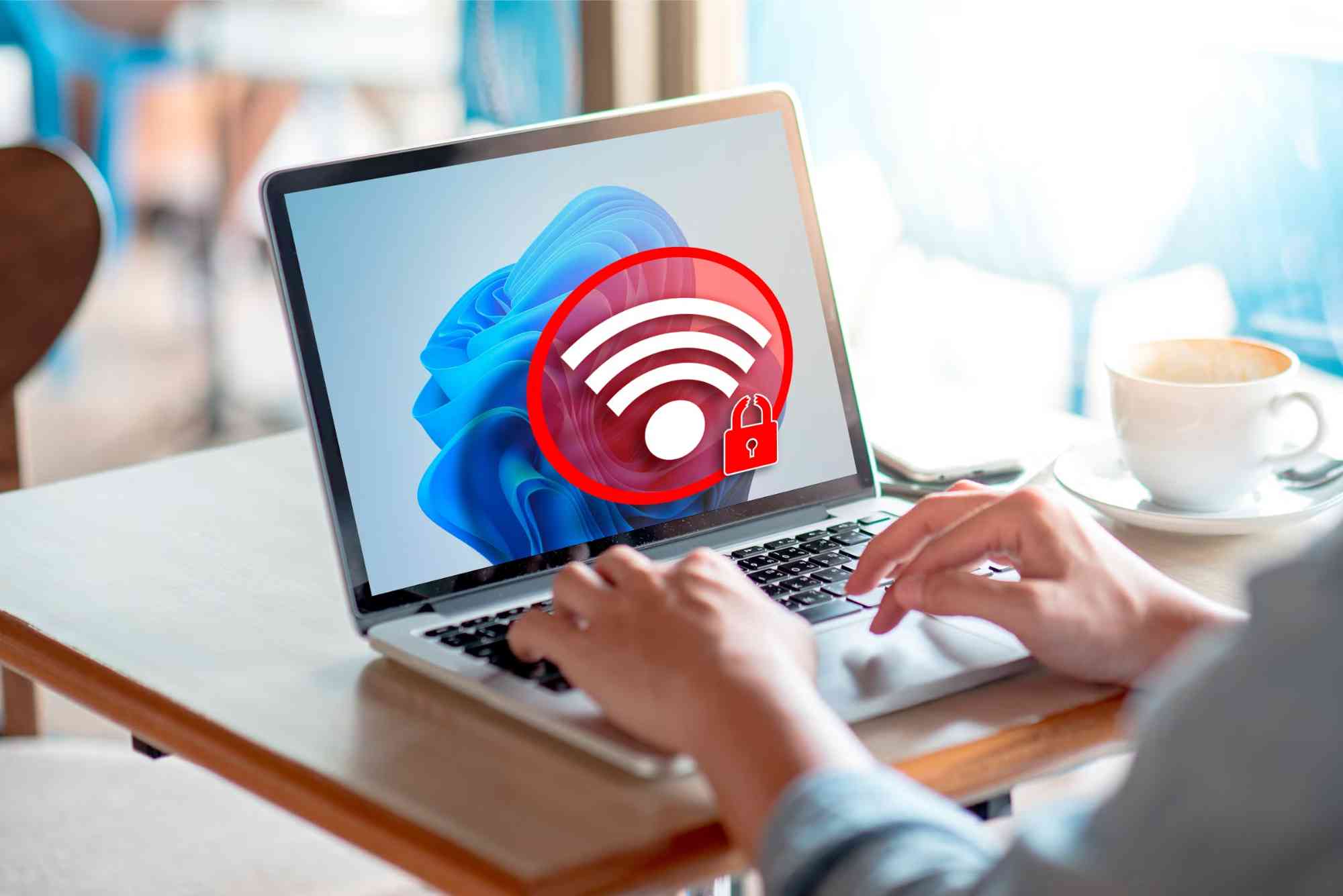Introduction
A slow internet connection can be one of the most frustrating experiences when you’re trying to work, stream, or browse online. Whether you’re dealing with buffering videos, lagging downloads, or sluggish browsing, understanding how to fix slow internet on a laptop can help restore your speed and productivity. The problem could stem from your Wi-Fi signal, network settings, background processes, or even outdated drivers. In this complete guide, we’ll explore practical steps to diagnose and resolve slow internet issues on your laptop, ensuring a smooth and fast online experience.
Understanding Why Your Laptop Internet Is Slow
Before jumping into fixes, it’s essential to understand the root causes of a slow connection. Many users assume that the problem lies with their internet provider, but in most cases, the issue starts with the device or its settings. Common causes include Wi-Fi interference, outdated network drivers, bandwidth-hogging applications, malware, or even incorrect DNS configurations. Identifying the real cause makes it much easier to fix slow internet on a laptop efficiently.
Check Your Internet Speed First
The first step is to check your current internet speed using an online speed test tool such as Speedtest.net or Fast.com. This gives you a baseline of your connection speed and helps determine if the issue lies with your internet service provider or your laptop. Compare your results with the speed you’re supposed to be getting according to your plan. If the speed is consistently lower than expected, you may need to troubleshoot deeper or contact your provider.
Restart Your Laptop and Router
One of the simplest yet most effective solutions is restarting your devices. A quick reboot of both your laptop and Wi-Fi router can clear temporary glitches, reset network settings, and improve overall speed. Unplug your router for about 30 seconds, plug it back in, and allow it to reconnect. Then restart your laptop to refresh all network configurations. This step alone often resolves temporary internet slowdowns.
Move Closer to the Router
Wi-Fi signals weaken with distance and obstacles such as walls, doors, and furniture. If you’re working far from the router, your laptop may receive a weaker signal, resulting in slower speeds. Move closer to your router and check if the internet speed improves. Positioning your laptop in a direct line of sight with the router or using a Wi-Fi range extender can significantly enhance connectivity.
Forget and Reconnect to Wi-Fi Network
Sometimes, your laptop’s Wi-Fi profile may be corrupted or outdated, causing a poor connection. Forget your current Wi-Fi network and reconnect to it. Go to your network settings, select your Wi-Fi connection, and click “Forget.” Then reconnect by entering your password again. This refreshes the connection and can fix slow internet issues on your laptop quickly.
Disable Background Applications and Auto Updates
Background programs can silently consume large amounts of bandwidth. Applications like cloud backup services, streaming apps, or software updates often run without notice. To fix this, open your Task Manager (Ctrl + Shift + Esc on Windows) and check the Network tab to see which apps are using the most bandwidth. Disable or close any unnecessary programs. Also, set Windows or macOS updates to install during off-peak hours to prevent slowdowns while you work.
Update Your Network Drivers
Outdated network drivers are a common cause of slow or unstable connections. Updating your Wi-Fi drivers ensures your laptop communicates efficiently with the router. To update drivers on Windows, go to Device Manager, expand “Network adapters,” right-click on your Wi-Fi driver, and select “Update driver.” On macOS, make sure your system is updated to the latest version. Updated drivers often include bug fixes and performance enhancements.
Change Your DNS Settings
Sometimes, slow internet is due to the default DNS server provided by your Internet Service Provider (ISP). Switching to a faster and more reliable DNS can improve website loading times. You can use Google’s Public DNS (8.8.8.8 and 8.8.4.4) or Cloudflare’s DNS (1.1.1.1). To change DNS on Windows, go to your Network and Internet settings, select your Wi-Fi connection, and update the DNS settings under IPv4 configuration. This small tweak can make a noticeable difference in browsing speed.
Scan for Malware and Viruses
Malware or viruses can slow down your internet by hijacking your bandwidth or sending unwanted data in the background. Run a full system scan using a trusted antivirus or anti-malware tool to remove any threats. Tools like Windows Defender, Malwarebytes, or Bitdefender can help keep your system clean and running efficiently. Regular scans ensure your laptop remains optimized for internet performance.
Turn Off VPN or Proxy Settings
If you’re using a VPN or proxy server, it could be reducing your internet speed, especially if it routes traffic through distant servers. Temporarily disable your VPN or proxy and test your speed again. If the connection improves, consider switching to a faster VPN service or using it only when necessary. VPN encryption can sometimes limit bandwidth, so using it selectively helps maintain speed.
Adjust Power Settings
Your laptop’s power mode can impact Wi-Fi performance. In power-saving mode, your network adapter may operate at reduced capacity to conserve energy. Switch to “High Performance” mode to ensure your Wi-Fi adapter gets full power. On Windows, go to Control Panel → Power Options and select “High Performance.” For macOS, open System Preferences → Battery and adjust settings to maximize performance when plugged in.
Check for Windows or macOS Network Issues
Sometimes, system updates can alter network configurations or introduce bugs that slow down your connection. Run the Windows Network Troubleshooter by going to Settings → Network & Internet → Status → Network Troubleshooter. On macOS, you can use Wireless Diagnostics by holding the Option key and clicking the Wi-Fi icon. These built-in tools automatically detect and fix common network problems.
Reset Network Settings
If none of the above solutions work, you can reset your laptop’s network settings. This will remove all saved Wi-Fi networks, DNS configurations, and IP settings, restoring default network parameters. On Windows, go to Settings → Network & Internet → Status → Network Reset. On macOS, go to System Preferences → Network, select Wi-Fi, and click the minus (-) button to remove it, then add it back again. After the reset, reconnect to your Wi-Fi and check the speed.
Consider a Wired Ethernet Connection
If you’re still facing slow speeds, try connecting your laptop directly to the router with an Ethernet cable. Wired connections provide a stable and faster internet experience, free from wireless interference. This method helps determine whether the issue is with the Wi-Fi network or your internet service. If the Ethernet connection is fast, the problem lies in the Wi-Fi setup.
Contact Your Internet Service Provider
When all else fails, contact your Internet Service Provider (ISP) to report the issue. They can run diagnostics on your connection and check for outages, line noise, or configuration errors. Sometimes, upgrading to a higher-speed plan or using a better router can resolve persistent slowdowns. For reliable and fast internet solutions, consider checking out Dhanote Internet Services, known for stable and high-performance connectivity across regions.
Prevent Future Internet Slowdowns
Maintaining a fast internet connection requires regular care and a few best practices. Keep your router’s firmware updated to improve performance and security. Position your router centrally in your home for better coverage. Avoid overloading your network with too many devices streaming or downloading simultaneously. Regularly clear your browser cache and disable unnecessary extensions. These preventive measures help sustain your internet speed over time.
Knowing how to fix slow internet on a laptop empowers you to handle most connectivity problems without waiting for technical support. From updating drivers to optimizing Wi-Fi settings and scanning for malware, small tweaks can make a big difference. Remember, consistency in maintenance—such as updating software, managing background apps, and checking router placement—can keep your internet running smoothly.
If you’re still struggling with unstable speeds even after troubleshooting, it might be time to upgrade your connection. Visit Dhanote Internet Services to explore reliable plans that ensure faster, uninterrupted browsing, streaming, and work-from-home performance.
FAQs
Why is my laptop internet so slow but my phone is fast?
Your laptop may have outdated drivers, background programs consuming bandwidth, or weak Wi-Fi reception compared to your phone. Try updating your drivers and moving closer to the router.
How do I fix slow Wi-Fi on my Windows laptop?
Update your network drivers, restart your router, disable background apps, and change your DNS settings. These steps often fix Wi-Fi slowdowns effectively.
Can a virus slow down my laptop’s internet speed?
Yes, malware can consume bandwidth and interfere with network performance. Regular virus scans help maintain both system and internet speed.
Does using a VPN make my internet slower?
Sometimes. VPNs route traffic through remote servers, which can reduce speed. Use a fast VPN or disable it when not needed.
Will resetting network settings help improve speed?
Yes, resetting removes faulty configurations and restores default settings, often resolving persistent connection problems.








